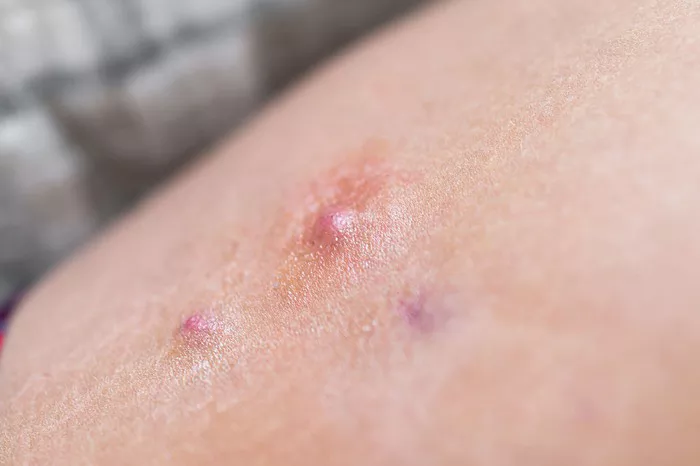Hidradenitis suppurativa (HS) is a chronic skin condition that can cause painful lumps and abscesses. Finding the right surgeon for HS is crucial for effective treatment. This article will guide you through what to look for in a surgeon, the types of procedures available, and how to prepare for surgery.
Understanding Hidradenitis Suppurativa
What is Hidradenitis Suppurativa?
Hidradenitis suppurativa is a skin condition that often appears in areas where skin rubs together, such as the armpits, groin, and under the breasts. It causes painful nodules that can break open and drain pus. These flare-ups can be distressing and may lead to scarring.
Symptoms of Hidradenitis Suppurativa
Common symptoms include:
- Painful lumps under the skin
- Drainage of pus or blood
- Foul odor from the affected area
- Scarring and tunneling under the skin
If you experience these symptoms, consult a healthcare provider for a proper diagnosis.
Why Surgery for Hidradenitis Suppurativa?
Surgery may be necessary if:
- Medical treatments, such as antibiotics or biologics, do not work.
- You have severe cases with frequent flare-ups.
- There is significant scarring or abscess formation.
Types of Surgical Procedures
Surgeons may use different procedures based on the severity of your condition:
Incision and Drainage
- This is a common procedure for draining abscesses.
- It provides immediate relief but may not prevent future flare-ups.
Excision
- This involves removing the affected skin and underlying tissue.
- It can lead to better long-term outcomes for chronic cases.
Flap Reconstruction
- In more severe cases, surgeons may use flap reconstruction to cover the wound after excision.
- This helps maintain skin integrity and reduces the risk of recurrence.
Laser Therapy
- Laser treatments can also be used to target and destroy diseased tissue.
- This is a less invasive option compared to excision.
Choosing the Right Surgeon
Qualifications and Experience
When looking for a surgeon for HS, consider their qualifications:
Board Certification: Ensure the surgeon is board-certified in dermatology or plastic surgery.
Experience with HS: Look for surgeons who specialize in hidradenitis suppurativa. They should have experience performing the specific procedures you may need.
Hospital Affiliations: Check if they are affiliated with reputable hospitals known for skin health.
Patient Reviews and Recommendations
Research patient reviews to understand the surgeon’s reputation:
Online Reviews: Websites like Healthgrades and RealSelf can provide insights from previous patients.
Word of Mouth: Ask friends or family for recommendations, especially if they have had similar procedures.
Consultation
Schedule a consultation with potential surgeons:
Discussion of Treatment Options: A good surgeon will discuss various treatment options and what is best for your specific case.
Q&A Session: Prepare questions about their experience, success rates, and post-operative care.
Comfort Level: You should feel comfortable with the surgeon and their team. Good communication is essential.
Preparing for Surgery
Pre-Surgical Consultation
During the pre-surgical consultation, the surgeon will:
- Review your medical history.
- Perform a physical examination.
- Discuss potential risks and complications.
- Explain the surgical procedure in detail.
Lifestyle Changes
Before surgery, consider making some lifestyle changes:
Quit Smoking: Smoking can impair healing and increase complications.
Healthy Diet: Eating a balanced diet can help your body recover more effectively.
Weight Management: Maintaining a healthy weight may reduce flare-ups and improve surgical outcomes.
Medication Review
Discuss all medications with your surgeon, including:
- Prescription drugs
- Over-the-counter medications
- Supplements
Some medications may need to be adjusted before surgery.
Post-Operative Care
Recovery Process
The recovery process can vary based on the type of surgery:
Incision and Drainage: Recovery is usually quick, but you may need to monitor the area for signs of infection.
Excision: Expect more downtime. You may need stitches, and it’s essential to follow the surgeon’s instructions for care.
Follow-Up Appointments
Regular follow-ups are crucial:
- Your surgeon will monitor the healing process.
- They can address any concerns or complications that arise.
Managing Pain and Discomfort
Post-operative pain can be managed with:
- Over-the-counter pain relievers
- Prescription medications, if necessary
- Cold compresses to reduce swelling
Understanding Risks and Complications
All surgeries come with risks. Common risks for hidradenitis suppurativa surgeries include:
- Infection at the surgery site
- Excessive bleeding
- Scarring or changes in skin color
- Recurrence of HS symptoms
Discuss these risks with your surgeon and ensure you understand the steps taken to minimize them.
Living with Hidradenitis Suppurativa
Ongoing Management
Even after surgery, managing HS is crucial. This includes:
Regular Skin Care: Keep the affected areas clean and dry.
Avoid Triggers: Identify and avoid factors that cause flare-ups, such as friction or sweating.
Support Groups: Consider joining a support group for individuals with HS. Sharing experiences can be helpful.
Long-Term Outlook
The long-term outlook for HS patients varies. Some may find significant relief after surgery, while others may continue to experience flare-ups. Ongoing treatment and lifestyle adjustments are often necessary.
Conclusion
Finding the best surgeon for hidradenitis suppurativa is a vital step toward managing this challenging condition. Look for a qualified, experienced surgeon who specializes in HS and has a strong track record. Prepare thoroughly for your surgery and follow all post-operative care instructions for the best outcomes. Remember, effective management is a long-term commitment, but with the right support and treatment, you can lead a fulfilling life.
Related topics:



























